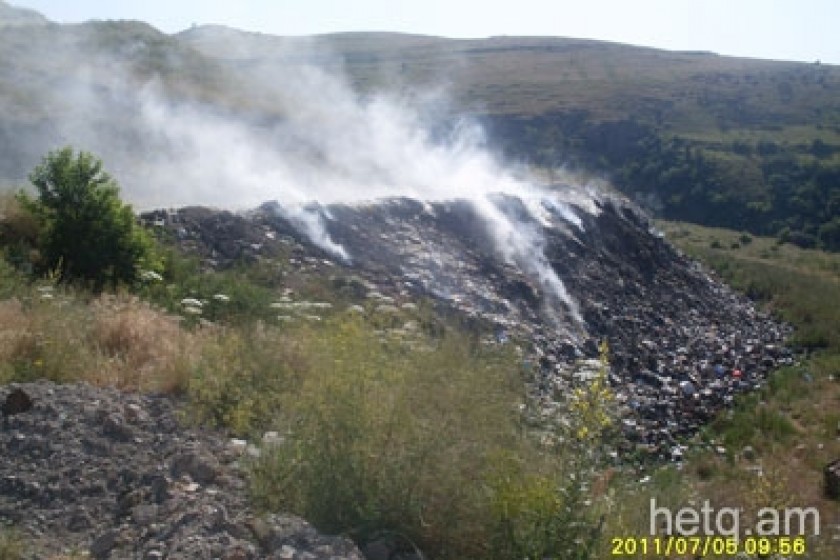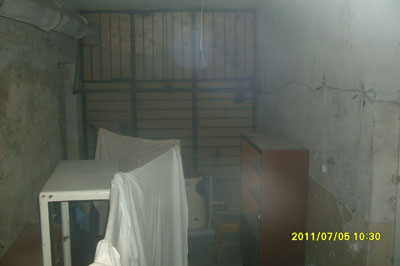
The Gruesome Side of Goris: Human Organs Found in Local Dump
The main garbage dump in Goris lies just a kilometre or two from the town.
It was here, two months ago, that a local resident came across a bunch of plastic bags scattered around with different names marked on them. Puzzled by what he found, he started asking neighbours if they had any clues.
It was then that a youngster recounted what had taken place a few days before. It seems that a pack of dogs were seen battling over a similar bag. Their shrieks and cries attracted spectators who watched the frenzied scene.
When it was over, they noticed that one of the ripped bags contained what looked like human remains; organs to be more precise.
After hearing the grisly story, our local resident realized that the human offal was from the town morgue and was brought to the dump by garbage trucks.
He and some other residents immediately called the Goris sanitary unit.
Rafik Mkrtchyan says that for the next few days parents kept their kids indoors. They wanted assurances that human body parts were no longer winding up in the local dump nearby.
Mr. Mkrtchyan, who lives not far from the dump, complained that the site to close to the neighbourhood and that residents have to put up with the burning stench of garbage throughout the day.
The other side of the problem is that the Goris morgue is sub-standard and in need of immediate renovation.
Last year the World Bank allocated $2.5 million to help renovate the Goris Medical Center. A 1,000 square meter annex was built to house the diagnostic, surgery and maternity wards and other services.
Medical Center Director Slavik Amiryan says the project was a turning point in terms of local health care. The Bank has already agreed to invest 300 million AMD towards the construction of a morgue that meets all modern standards.
Director Amiryan told me that the municipality must now allocate land for construction.
Goris Mayor Nelson Voskanyan says that last November the City Council assigned a plot of land in the Arevashat neighbourhood for the morgue and that they wrote to the national government so that the land could receive a zoning change.
They have yet to receive an answer.
Moushegh Kostandyan, who works at the Syunik Regional Administration, says that the zoning issue will soon be resolved.
 Presently, dissections and post mortems continue to be conducted on the ground floor of the polyclinic's former annex. The main door opens onto a busy street and the window is generally kept open.
Presently, dissections and post mortems continue to be conducted on the ground floor of the polyclinic's former annex. The main door opens onto a busy street and the window is generally kept open.
Pedestrians walking by can stop and take a peek at the proceedings inside if they feel so inclined.
Residents in a neighboring apartment block also have an unobstructed view into the morgue
Garnik Mirzoyan, head of the Medical Center's Diagnostic Department and a former morgue critic, now seems pleased that a private contractor has been hired to transport bodies and body parts.
He says that the morgue conducts an average of 16-18 dissections each month and that the private transport service has led to a decrease of dissections in the home, especially in outlying rural communities.
Now, morgue refuse is buried in a pit some 100 meters from the Goris Medical Center.
Residents living near the garbage dump decided to block the road if human remains continued to be transported there.
One of the nurses at the Medical Center told me that she can no longer watch from the window when one of her colleagues carries a bucket of human waste to the pit outside.
Goris residents wait for answers to these pressing problems.
In the meantime, the Armenian government has declared Goris to be a regional tourism center.
Are scattered body parts and tourism mutually exclusive?
 Videos
Videos Photos
Photos
Comments (7)
Write a comment